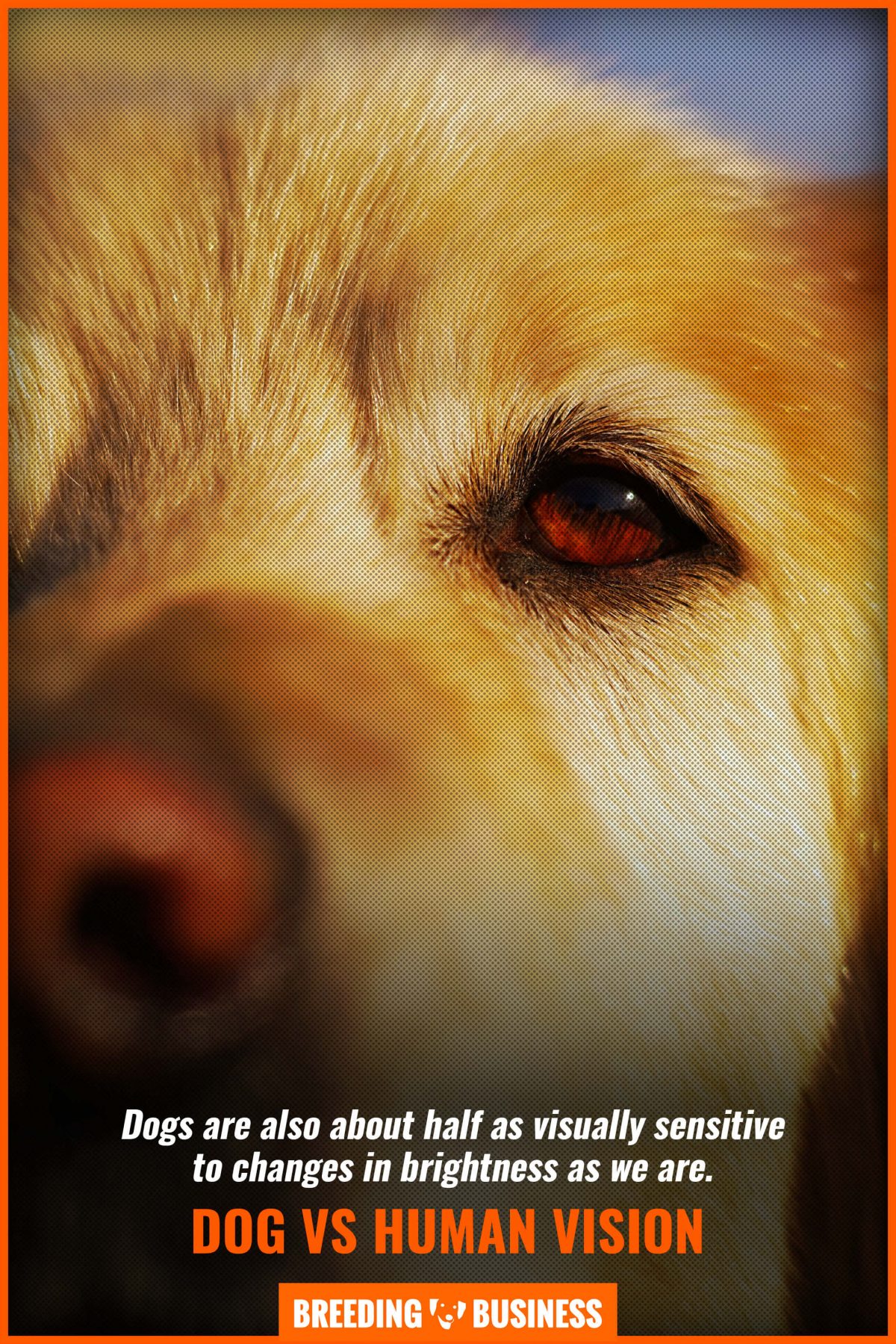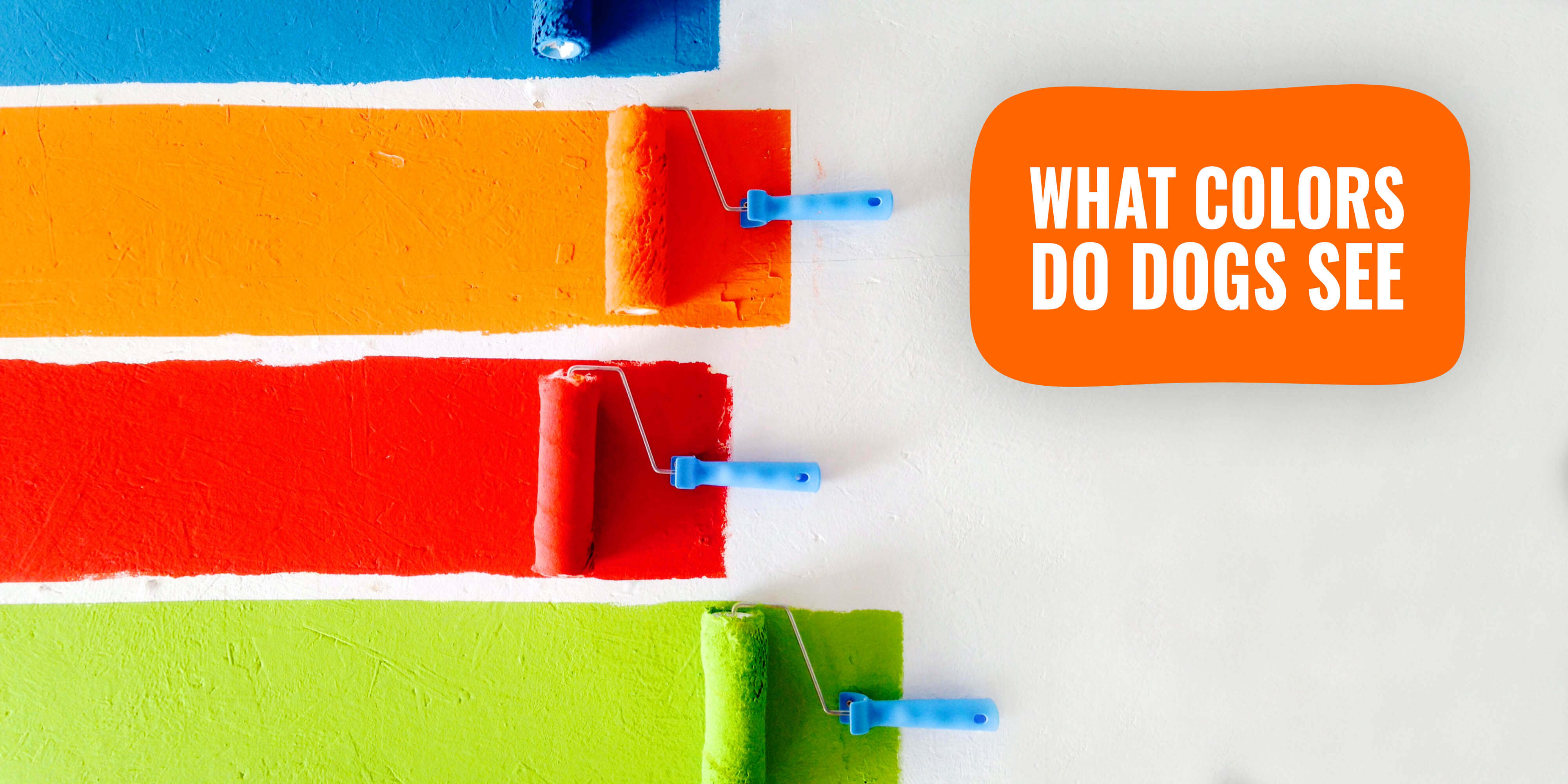It is a very popular misconception that dogs do not experience color, and only see in black and white. But this is simply not true! However, while dogs have decent eyesight, their perception of color is very different from ours. So what colors do dogs see? and how do they see them differently?
Dogs don’t live in a colorless world like we once thought. But where did this misconception come from and what is the truth? In this article, we will explore the truth behind the myth, as well as answer some of the common questions pertaining to dogs’ color vision. Such as how do dogs see differently?
Are Dogs Colorblind?
Like all animals, dogs’ eyes have photoreceptors in their retinas that detect color frequencies of light. However, dogs have only two photoreceptor cones, while humans have three, which is why dogs are considered colorblind by human standards. It’s believed that dogs can see yellow and blue, as well as black, white, and grey.
Researchers at the University of California, Santa Barbara conducted an experiment in 1989 where they taught dogs to pick the odd one out of some colored circles. The dogs were able to distinguish yellow and blue, but not red from green. This suggests that green, red, and reddish colors like orange appear as different shades of yellow to dogs, while blue and yellow are perceived in the same way as humans.
In summary, dogs are not completely colorblind, but their perception of colors is limited compared to humans. While they may see some colors differently, they can still see and enjoy the world around them.
How Is A Dog’s Vision Different From A Human’s Vision?
Technically, humans are colorblind too! There are several animals that have more photoreceptors in their eyes and see more colors than we do. Fun fact – Mantis shrimp have 16! They, as far as we know, are able to see the most colors of any animal on the planet. But when it comes to color and clarity, humans have much better eyesight than dogs; we already know that we see more colors than they do, but we also see things a lot more clearly. According to Psychology Today, if ideal visual clarity in humans is 20/20 vision, then the average dog’s would be 20/75. This is quite a lot blurrier than the average human’s eyesight.
Now we know why dogs rely on their sense of smell! Dogs are also about half as visually sensitive to changes in brightness as we are. However, while humans have better overall vision than dogs, dogs have a much wider peripheral vision and far better night vision. The average human has a peripheral vision of around 190 degrees, whereas dogs can see about 250 degrees of what’s around them. This is because of the wider placement of their eyes and narrower shape of their skulls.
They also have more rods on their eyes, and an extra layer of eye tissue called the tapetum lucidum, which reflects light into the retina. This is what gives dogs their superior night vision, and also what makes their eyes glow in the dark at night!

How Do Dogs Eyes Perceive Color?
In the past, scientists believed that dogs only saw black and white, but recent research published in the Proceedings of the Royal Society B in 2013 shows that dogs are actually pretty good at telling different colors apart. The study, which was conducted in Russia, involved eight dogs that were trained to associate treats with pieces of paper of different shades of blue and yellow. The scientists found that the dogs could correctly identify the treats more often than not.
This means that dogs see colors in a similar way to us, and it could explain why they enjoy playing with colorful toys. However, because they may see many things in the same colors, it may be hard for them to differentiate between objects in some situations, such as playing with a green ball on green grass. Therefore, keep this in mind when selecting toys for your furry friend
What Colors Dogs Can See – FAQs
Dogs do see in color, just not the full variety of colors that humans can see
It is a common misconception that dogs can only see in black and white because of the term ‘colorblind’ – but this word only means that the colors seen are limited, not that the person or animal can’t see any at all.
According to scientists, dogs see the colors blue and yellow best, as well as black, white, and shades of grey. They can also see all different shades of yellow and blue, from light and bright to deep and dark.
Blue is likely the easiest color for dogs to see because greens, reds, and reddish colors such as orange and pink all appear as different shades of yellow to a dog. That’s a lot of yellow! So blue things really stand out to dogs.
Dogs don’t hate any colors, (that we know of). But as they see many colors as varying degrees of the same thing, it might be best to buy them toys in the colors that really stand out to them; bright yellows and blues. Because like humans, dogs – especially puppies – are stimulated by color.
Dogs can see a lot better in the dark than humans can. Their eyes have more rods than ours, and an extra layer of eye tissue called the tapetum lucidum, which reflects light into the retina. This is what gives dogs their superior night vision. It’s also what gives their eyes that orange glow in the dark.
Dogs almost certainly don’t see pink the way that we do. Pink colored objects are likely seen as a yellow or greyish color depending on the shade of pink. But of course, we will never know for sure! So if you want to know for certain, then ask your dog!
According to scientists, yellow and blue are the only colors that dogs can see. And while we wish that our dogs could see as many colors as us, they don’t know any different and as long as they are happy, so are we. Did you know that dogs only see those colors? Let us know in the comments down below.
